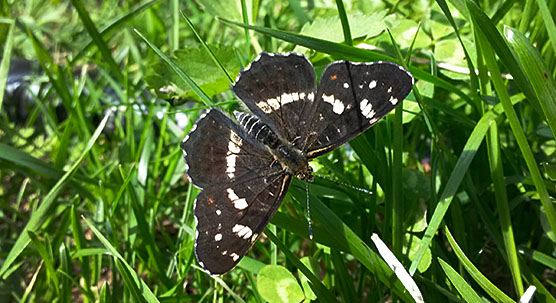Press release 2016-10-06 at 8:30
Large, mobile and multivoltine butterflies and moths that either utilise a wide variety host plants or have adapted to feed on nitrophilous plants are becoming more common in Finnish nature. Soil eutrophication caused by nitrogen deposition from the atmosphere has had a strong impact on the species that have flourished or declined in Finland over the past few decades.
The model created by an international research team led by the Finnish Environment Institute compiles research data on factors that affect population changes among herbivorous insects. These include the species’ variety of host plants, mobility, annual number of generations and the requirements of the food plants consumed in the larval stage in relation to the nitrogen content of the soil.

Map butterfly is one of the species which have benefit nitrogen deposition. Photo Janne Heliölä.
The model can be used to predict which species are likely to increase or decrease their numbers. The predictions were tested by collecting data on traits and population changes between 1993 and 2012 on over 1,000 butterfly and moth species occurring in Northern Europe. The data concerning the population changes were calculated based on the Insect Database (Hyönteistietokanta) in which Finnish insect enthusiasts record their observations on an annual basis.
Climate change is increasing nitrogen deposition in Finland
In line with the model predictions, it was found that the butterfly species that have seen the largest population increases in Finland are those that produce more than one generation a year, are mobile, utilise a wide range of plants for nutrition and/or feed on plants that favour nitrogen-rich soil. The nitrogen content of the soil affects both vegetation in general and the nitrogen content of individual plants. Ultimately, the effects cascade to population changes among butterflies and moths.
This being the case, the study provides a means for interpreting many of the changes in the Finnish insect populations along with the changes brought on by global warming. In Southern and Central Finland, nitrogen deposition from the atmosphere exceeds the ‘critical limit,’ and climate change has been estimated to further increase nitrogen deposition within the country.
The research results were published in the Global Ecology and Biogeography series of scientific articles.
More information
Senior Research Scientist Juha Pöyry, Finnish Environment Institute SYKE, tel. +358 295 251 534, firstname.lastname@ymparisto.fi
Links